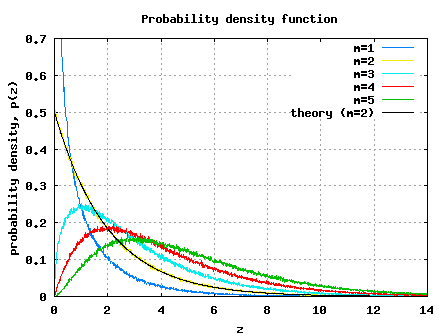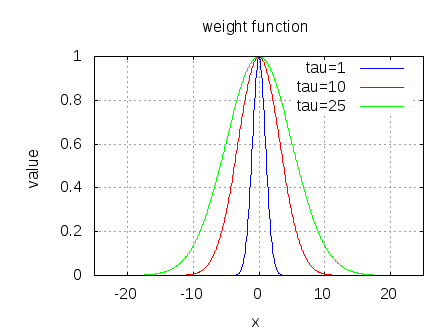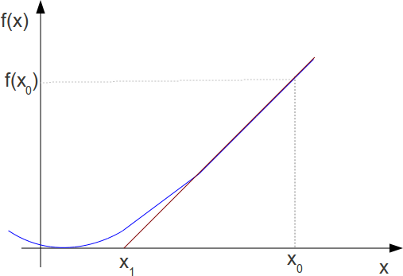While trying to derive the theoretical bit error rate (BER) for BPSK modulation in a Rayleigh fading channel, I realized that I need to discuss chi square random variable prior.
What is chi-square random variable?
Let there be independent and identically distributed Gaussian random variables
with mean
and variance
and we form a new random variable,
.
Then is a chi square random variable with
degrees of freedom.
There are two types of chi square distribution. The first is obtained when has a zero mean and is called central chi square distribution. The second is obtained when
has a non-zero mean and is called non-central chi square distribution. Four our discussion, we will focus only on central chi square distribution.
PDF of chi-square random variable with one degree of freedom
Using the text in Chapter 2 of [DIGITAL-COMMUNICATION: PROAKIS] as reference.
The most simple example of a chi square random variable is
,
where
is a Gaussian random variable with zero mean and variance
.
The PDF of is
.
By definition, the cumulative distribution function (CDF) of is
.
This simplifies to
.
Differentiating the above equation with respect to to find the probability density function,
.
Summarizing, the pdf of chi square random variable with one degree of freedom is,
.
PDF of chi-square random variable with two degrees of freedom
Chi square random variable with 2 degrees of freedom is,
,
where,
and
are independent Gaussian random variables with zero mean and variance
.
In the post on Rayleigh random variable, we have shown that PDF of the random variable,
where is
.
For our current analysis, we know that
.
Differentiating both sides,
.
Applying this to the above equation, pdf of chi square random variable with two degrees of freedom is,
.
PDF of chi-square random variable with m degrees of freedom
The probability density function is,
, where
the Gamma function is defined as,
,
p an integer > 0
.
I do not know the proof for deriving the above equation. If any one of you know of good references, kindly let me know. Thanks. 🙂
Simulation Model
Just for your reference, Matlab/Octave simulation model performing the following is provided
(a) Generate chi square random variables having m=1, 2, 3, 4, 5 degrees of freedom
(b) Probability density function is computed and plotted
Click here to download: Matlab/Octave script for simulating PDF of chi square random variable

Figure: PDF of chi square random variable (=1)
Reference
[DIGITAL-COMMUNICATION: PROAKIS] Digital Communications, by John Proakis



Nice work. Could you please post the non-central chi square random variables, it is more interested since it is a distribution of Rician fading channel. You have provided all the performances based on Rayleigh fading channel. Could you please post BER of OFDM system over Rician fading channel. Thanks
sudhan
@sudhan: I will add that to the to-do list
Few things in this world are free.
very few are nice too…
DSPlog.com is one of them
I thank you krishna for your efforts and sharing them worldwide.
Wish you good luck.
hope we will meet somewhere ..i wish
@Scr00m: Thanks. You may connect me to with my profile on LinkedIn.com https://dsplog.com/about/
sangat membantu dengan aadanya pembahasan soal spt ini. saya usul gimana, kalo qt bentuk komunitas lingkar studi khusus pembahasan soal seputar teknik elektro. dijamin banyak membantu. ditunggu info,thanx.
@fajaru: Can you please translate to english 🙂
@Lealem: As replied in
https://dsplog.com/2008/08/10/ber-bpsk-rayleigh-channel/#comment-1151
I have seen the simulation code which u used to simulate a Rayleigh fading channel. But i would like u to ask a hit how to simulate a frequency selective Rayleigh fading channel for OFDM application. I think the above simulation out put is a flat Rayleigh fading.
Thank you!!!